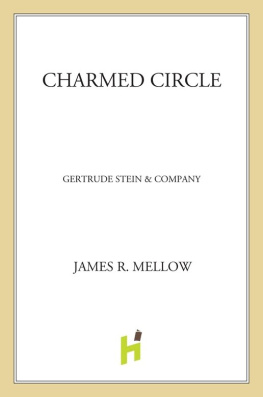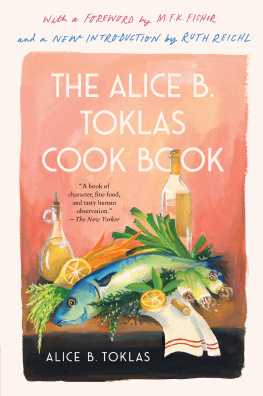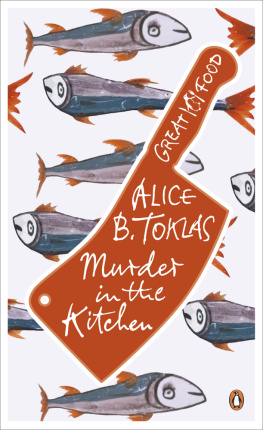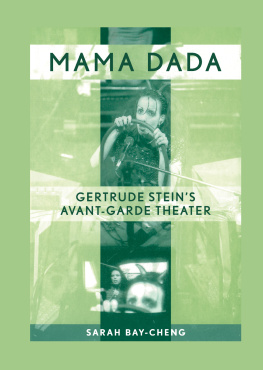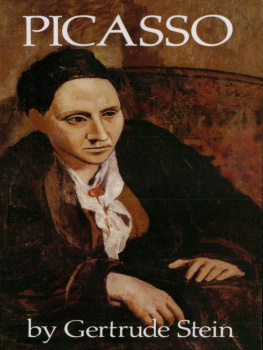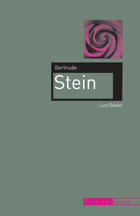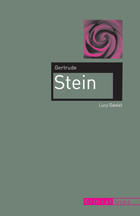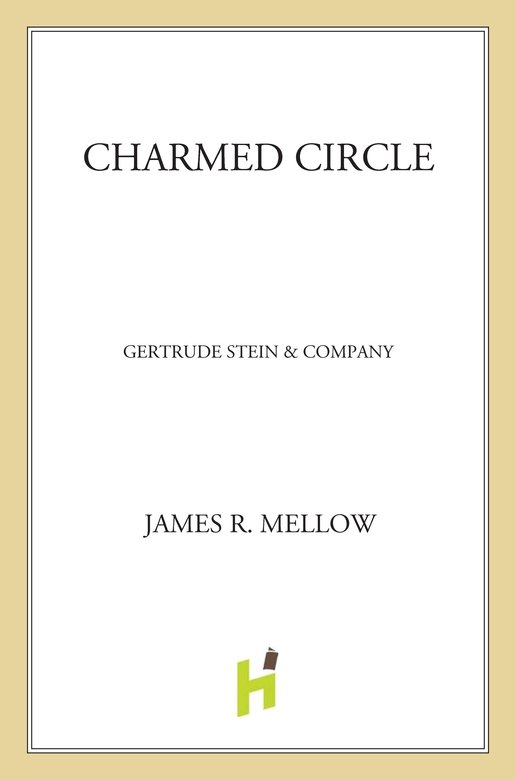When I began this biography of Gertrude Stein and her circle I had no ambitions about writing a definitive life, and I have not attempted to do so. I was interested in her life, her life-style, and the ways in which both informed her writing. That, largely, is what has occupied me in writing the book. If I have managed to present an honest womanwhich is what Ive always felt Gertrude Stein to have beeninstead of the legend, then one of the aims of this biography has been accomplished.
For literary reasons, I am indebted to Leo Steins observation that history is a mares nest of illusory knowledge. It became one of the underground themes of the book. I am also indebted to Leon Edel, not only for his kindness in answering my queries about Gertrude Steins aborted visit to Henry James but for his masterful biography of James as well. Published in five volumes, it is nevertheless one of the most economically written biographies I know. Important episodes in Jamess life, his complex social relations, his impressions of people, and their impressions of him are managed within the space of one or two pages of narrative. It will be obvious to many readers that Edels biography has been a model for my own.
On the practical level, I am most of all indebted to Donald Gallup, Curator of the Collection of American Literature, The Beinecke Rare Book and Manuscript Library, Yale University. My indebtedness to his research and writings on the subject of Gertrude Stein are acknowledged in the Notes and Bibliography. I am especially grateful for his permission to quote, without restrictions, from the unpublished letters of Gertrude Stein in advance of his own publication.
I am also deeply grateful to the Estate and/or Heirs of Gertrude Stein and the Estate of Alice B. Toklas for permission to quote from various Stein texts and from unpublished materials by Gertrude Stein in the Stein archives at Yale, as well as permission to quote passages from a series of unpublished letters by Alice B. Toklas. Calman A. Levin, of Daniel C. Joseph, Attorney at Law, has been unfailingly kind.
I am indebted to two recent Stein scholars: Richard Bridgman, whose Gertrude Stein in Pieces is a valuable addition to the Stein literature, and Leon Katz, whose discovery of several early versions of later Stein texts and of the personal relationships on which Gertrudes early novel Q.E.D. is based are acknowledged in my text and in the Notes. For mildly paranoid reasons on my part, I have not consulted Katzs 1963 doctoral dissertation, The First Making of The Making of Americans . He is at present preparing a critical edition of the notebooks that Gertrude Stein kept while writing The Making of Americans, as well as a detailed biographical study based on his researches in the early Stein texts.
In the course of my biography, I quoted frequently from published memoirs and letters. Because I was dealing with a number of very literate people, I felt it was better to quote them directly rather than put words intheir mouths by means of the conventional method of paraphrase. Where the amount of quotation exceeds fair use allowances, I am grateful to the publishers cited on the copyright page. I want to thank Charles Scribners Sons for permission to quote necessary passages from Ernest Hemingways A Moveable Feast and from The Letters of F. Scott Fitzgerald, edited by Andrew Turnbull. I am no less grateful to the publishers of less-quoted sources, listed in the Notes and Bibliography. With the exception of minor descriptive phrases, the sources of direct quotations are given in the Notes.
I depended heavily upon biographies and autobiographies of people who figured prominently in the lives of Gertrude Stein and Alice B. Toklas, and these are cited in the Bibliography. But I would especially like to acknowledge here the work of Gay Wilson Allen, Carlos Baker, Alfred H. Barr, Jr., Bruce Kellner, Arthur Mizener, Roland Penrose, Barbara Pollack, Francis Steegmuller, and Virgil Thomson.
For interviews, letters, and assistance, I am indebted to Joseph Barry, the late Eugene Berman, Janet Flanner, D.-H. Kahnweiler, the late Stanton Macdonald-Wright, and Julian Stein, Jr. James Lord and Leon Gordon Miller offered me their unpublished memoirs and allowed me to quote freely from them. Lords memoir is scheduled for publication in a forthcoming edition of the magazine Prose.
Several New York art dealersLee Ault, Gertrude Dennis, Abe Sachs, Robert Schoelkopf, Joan Washburn, and Virginia Zabriskiehave helped me with photographs or alerted me to out-of-the-way source materials.
For various favors in the writing, editing, and production of this book, I am indebted to Jennifer Dunning, Steven Frankel, Martin Friedman, Mary Hemingway, Ellen B. Hirschland, Michael Janeway, William Jovanovich, Hilton Kramer, Gilda Kuhlman, Robert Lescher, John McKendry, Rita Myers, Mme. Ernest Pernollet, Margaret Potter, and W. G. Rogers.
I particularly want to thank John Hochmann, of Praeger Publishers, for his encouragement and advice during a project that lengthened into several more years than I had anticipated.
I owe a special debt of gratitude to Minna and Mell Daniel, for offering me, out of the blue, their letters from Alice B. Toklas, as well as a well-remembered luncheon alfresco.
I am more than grateful to the American Council of Learned Societies for a grant-in-aid toward the completion of this book.
And, lastly, I want to thank Augie Capaccio for the pleasures of the road a winding country roadthat led to an afternoon at Bilignin.
I wanted to hear their voices: Picassos high, whinnying laugh as Gertrude Stein recalled it; Matisses halting, carefully deliberated pronouncements; the terse self-consciousness of Hemingway; Robert McAlmons aggravated, boozy malice; the tidy precision of Alice Toklass observations; and, above all, the surprising, cultivated, contralto voice of Gertrude Stein repeating phrases, sentences, and odd judgments that I have remembered and turned over in my mind for what must be, now, a quarter of a century.
I wanted to re-create the texture of a life, a writers daily life, out of memoirs, recollections, and old letters that, if not always literature, still carried the fire of issues and ambitions that had not burned out completely. I wanted, if I could, to recapture something of the special relationship of two livesa difficult relationship, no doubt, but a durable and productive onethrough the nearly forty years that Gertrude Stein and Alice Toklas lived together. And I wanted to catch something of the summery quality of those ordinary dayssunny days, I imagined, with sudden mountain squalls and drenching rains in the late afternoon which they spent together in their country house at Bilignin.
Writing about the past is like attempting to restore an old house: You can never bring it back to what it once was, but you can hope to make it livable again.
JRM.
Works by Gertrude Stein, Alice B. Toklas, and Leo Stein that are frequently cited in the Notes are referred to by initials or abbreviations. A list of the principal works by these authors, with a key to the abbreviations used, appears at the front of the Bibliography. I also employ in the Notes two other abbreviations: unp . YCAL refers to letters in the Collection of American Literature, The Beinecke Rare Book and Manuscript Library, Yale University, that, so far as I know, have not been previously published; for letters that have been published, the published sources are cited. MOMA refers to the Museum of Modern Art, New York.

